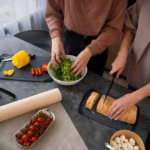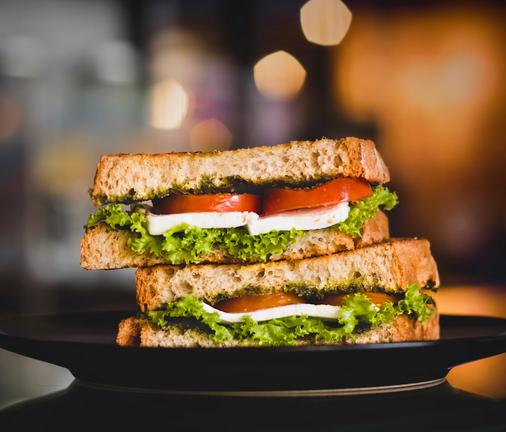Cooking is an essential life skill that goes beyond mere sustenance—it’s an art form that allows individuals to express creativity, explore flavors, and nourish both body and soul. Whether you’re a novice in the kitchen or looking to expand your culinary repertoire, mastering a few essential cooking techniques lays a solid foundation for creating delicious meals with confidence and finesse.
Searing and Sauteing:
One of the fundamental techniques in cooking is searing and sautéing, which involve cooking food quickly over high heat to develop flavor and texture. Searing is typically used for meats and involves placing them in a hot pan with a small amount of oil, allowing the surface to caramelize and develop a rich, brown crust. This process locks in juices and enhances the natural flavors of the meat. On the other hand, sautéing is perfect for vegetables, where they are cooked in a similar manner but for a shorter time to retain their crispness and nutrients.
Balancing Flavors:
Achieving a harmonious balance of flavors is another crucial aspect of cooking that can elevate a dish from ordinary to extraordinary. Understanding the basic taste profiles—sweet, salty, sour, bitter, and umami—allows you to manipulate ingredients to create complex and well-rounded flavors. For example, balancing the acidity of tomatoes with a pinch of sugar can reduce their tartness and enhance their natural sweetness. Experimenting with different seasonings, herbs, and spices enables you to tailor dishes to your preferences and create memorable dining experiences.
Knife Skills:
Knife skills are fundamental for efficiency, safety, and achieving uniformity in cooking. Learning proper cutting techniques not only enhances the aesthetics of your dishes but also ensures even cooking. Begin by mastering basic cuts such as dicing, mincing, and julienning, which are essential for preparing ingredients like vegetables and meats. A sharp knife and proper grip are key to precision and preventing accidents in the kitchen. With practice, you’ll gain confidence in handling various ingredients and be able to prepare meals more efficiently.
Mastering Heat Control:
Controlling heat is a cornerstone of successful cooking, influencing everything from texture to flavor development. Different cooking methods—such as boiling, simmering, and braising—require precise heat management to achieve optimal results. Boiling, for instance, involves heating liquids to their boiling point, ideal for cooking pasta and vegetables quickly. Simmering, on the other hand, maintains a gentle heat just below boiling, perfect for slowly tenderizing tough cuts of meat or developing complex flavors in soups and stews.
Understanding Thickening Agents:
Thickening agents play a crucial role in creating sauces, soups, and stews with desirable textures. Flour, cornstarch, and arrowroot are common options used to thicken liquids by forming a gel-like consistency when heated. Roux, a mixture of flour and fat cooked together, is a classic thickening agent for sauces and gravies, imparting a rich flavor and smooth texture. Alternatively, incorporating ingredients like pureed vegetables or cream can also add thickness and richness to dishes without the need for additional agents.
Embracing the Importance of Resting:
Resting cooked meat before serving is a valuable technique that allows juices to redistribute evenly throughout the meat, ensuring tenderness and flavor retention. This principle applies to other foods as well, including baked goods and roasted vegetables, where resting allows flavors to meld and textures to stabilize. Patience during this stage can significantly enhance the dining experience, resulting in more succulent meats and well-rounded dishes.
Experimenting with Different Cooking Methods:
Beyond the basics, exploring various cooking methods opens up a world of culinary possibilities. Grilling imparts a smoky flavor and attractive grill marks to meats and vegetables, while roasting intensifies flavors and caramelizes sugars. Steaming preserves the natural color and nutrients of foods, making it an ideal method for cooking delicate ingredients like fish and vegetables. By experimenting with different techniques, you can discover new flavors, textures, and techniques that inspire creativity and expand your culinary repertoire.
Conclusion:
Mastering essential cooking techniques empowers you to create delicious and satisfying meals while honing your culinary skills. From searing and sautéing to mastering heat control and balancing flavors, each technique plays a vital role in transforming raw ingredients into memorable dishes. With practice, patience, and a willingness to experiment, even beginners can develop confidence in the kitchen and enjoy the rewards of preparing homemade meals that delight the senses and nourish the body. Whether you’re cooking for yourself, family, or friends, the journey of culinary exploration is as fulfilling as the meals themselves.





